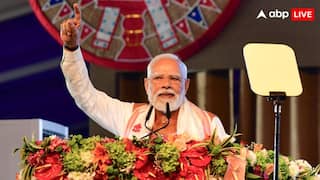Economists Predict WPI To Hover Around 3% In FY25
Wholesale inflation for manufactured goods has continued to linger in the contractionary territory at minus 0.4 per cent year-on-year (YoY), albeit with a decrease in deflation

The Wholesale Price Index (WPI) is likely to range between 2 to 3 per cent over the upcoming two quarters, according to top economists at two credit rating agencies. They further estimate that the WPI will average around 3 per cent for the fiscal year 2024-2025. This insight comes as the Commerce and Industry Ministry disclosed that the WPI for April 2024 stood at 1.26 percent.
In response to the data, Suman Chowdhury, Chief Economist and Head of Research at Acuite Ratings and Research, commented: "WPI trajectory in India is finally showing signs of a pickup, rising to 1.26 per cent YoY (year-on-year) in April '24 from 0.53 per cent YoY in March '24."
He noted that this marks the highest WPI figure observed in the past 13 months, propelled by a shift from deflation to inflation at 1.4 per cent year-on-year (YoY) in fuel and power inflation. Factors contributing to this increase include a surge in global crude prices and its derivatives, coupled with escalating power tariffs. "Expectedly, the wholesale food group inflation has also seen a rise to 5.5 per cent YoY, reflecting higher vegetable and fruit prices," he added.
Wholesale inflation for manufactured goods has continued to linger in the contractionary territory at minus 0.4 per cent year-on-year (YoY), albeit with a decrease in deflation. Manufacturing inflation has remained in deflationary territory since March '23, spanning the past 14 months. This suggests favourable input costs for the industrial sector amid subdued global demand.
Chowdhury expressed the view that a strengthening domestic economy and demand could soon reverse the deflationary trend in manufacturing inflation. He further predicted that with the imminent rise in fuel and power prices, as well as manufacturing inflation, Wholesale Price Index (WPI) inflation is poised to reach higher levels in the current year.
Regarding the Wholesale Price Index (WPI) inflation, Chowdhury remarked that it is anticipated to fluctuate between 2.0 per cent and 3.0 per cent over the upcoming two quarters, barring any significant surprises in commodity prices. He noted, “This will also make it difficult for headline CPI inflation to moderate towards 4.5 per cent in FY25, thereby making it also difficult for RBI to take a call on rate cut in the first half of the year.”
Chief Economist at CARE Ratings, Rajani Sinha, highlighted that wholesale inflation for fuel and power turned positive in April after 11 months. This development was attributed to disruptions in the Middle East's supply chain amid geopolitical tensions, which led to Brent crude oil prices hitting $90/bbl in April. Although Brent crude prices have since moderated, the recent uptick in global commodity prices, particularly industrial metals, necessitates careful monitoring due to its potential impact on input costs. Sinha pointed out that industrial metal prices have surged by approximately 20 per cent in the past three months.
"Going ahead, the base effect will remain adverse over the next two months, thereby resulting in higher WPI inflation. External risks emerging from ongoing geopolitical tensions also need to be monitored, given the risk they can pose to supply chains," Sinha said.
Sinha also noted that the outlook for food inflation has improved due to expectations of a normal monsoon, which is anticipated to bolster agricultural production. However, she emphasised the criticality of monitoring the temporal and spatial distribution of the monsoon. Sinha concluded by projecting that WPI inflation will likely stay at around 3 per cent in the fiscal year 2024-2025.
Also Read: WPI Inflation In April Hits 13-Month High Of 1.26 Per Cent






































